The following list does not include Doug English, Blake Johnson or Ricky Brockway because I have written about them (and to a lesser extent Bruce Gaw, Darrow Hooper and Quency Hill) elsewhere. I should apologize for a glaring gender imbalance, as not a single girl is mentioned. Surely BA has produced some exceptional female athletes, maybe swimmers, soccer players, tennis players, basketball players (our team was runner-up in the 2015 5A state tournament), sprinters or shot-putters, but I do not know who they are. I ask your forbearance since I am in Korea, not exactly close to 2101 Millmar Drive in Dallas.
Here, then, are the exceptional eight:
I remember reading about James Prda (BA, class of 1961) in the Dallas Morning News and Dallas Times Herald. A guy who lived across the street, Ronnie Scheu, had played with him and said he was pretty darn good. Prda had two seasons at Navarro Junior College. Not just that, he played semi-pro football with the Dallas 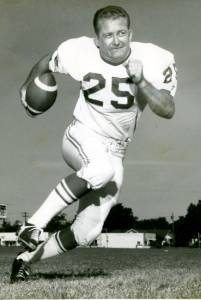 Rockets of the Texas Football League from 1966 to 1969. A halfback, he scored seven touchdowns and gained 399 yards. Prda caught four passes and punted 22 times. At some point in his later life, he had a connection to the cheesy television show “Dallas.” He drove a truck and was involved in the Teamsters. Prda died in 2018.
Rockets of the Texas Football League from 1966 to 1969. A halfback, he scored seven touchdowns and gained 399 yards. Prda caught four passes and punted 22 times. At some point in his later life, he had a connection to the cheesy television show “Dallas.” He drove a truck and was involved in the Teamsters. Prda died in 2018.
Despite weighing just 128 pounds, Gary Blair was the starting center fielder for the Bryan Adams baseball team which won the 1963 city championship. He enrolled at Texas Tech but soon dropped out, spent four years in the Marines (stationed in Okinawa), and found his way back to Lubbock and the baseball diamond. It seemed he also knew a thing or two about basketball because he was hired to coach the girls team at South Oak Cliff—a European-American coach at a predominantly black school, albeit one that was 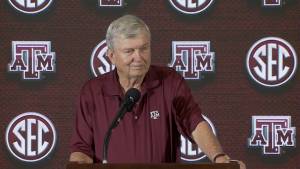 100% European-American when it opened in 1952. He won three state championships with the Golden Bears, 1977, 1978 and 1980.
100% European-American when it opened in 1952. He won three state championships with the Golden Bears, 1977, 1978 and 1980.
Blair jumped to the college level, spending five years as an assistant to Leon Barmore at Louisiana Tech. During that time, LTU won two national titles in the women’s game. On he went to Stephen F. Austin, where his teams compiled a 210-43 record and got to the NCAA tourney six times. The University of Arkansas was more of a high-profile job, so he shifted to Fayetteville. His 1998 team got to the Final Four. In 2003, he made another change—this time returning to his home state. Texas A&M, unencumbered by any tradition of excellence in women’s hoops, enticed him. It took a while, but Blair got the Aggies moving up-up-up. They won the 2011 national championship. Blair, who has received countless honors in his coaching career, makes $800,000 per annum.
When I got to Bryan Adams in September 1968, James Helwig was a freshman football player over at TCU. I knew his younger brother Bobby. Helwig had been a star linebacker for the Cougars, but he washed out on the college level. During his BA days, he was a terror in the boxing ring with some Golden Gloves titles to his  name. After football, Helwig resumed boxing but as a pro. He was at one point the “heavyweight champion of Texas.”
name. After football, Helwig resumed boxing but as a pro. He was at one point the “heavyweight champion of Texas.”
Most memorably, he and Cleveland “Big Cat” Williams were part of a 4-round (2 rounds each) exhibition at the Houston Astrohall with Joe Frazier in the summer of 1971. He landed several good punches and even bloodied Frazier’s nose. Helwig retired with a 24-2 record, worked as a bouncer and started a Rockwall-based trucking company in 1984. They are still in business.
My brother Randy graduated from BA in 1969. That meant he’d had the good fortune to see Eric Groscurth play basketball for two seasons. Groscurth stood 6′ 6″ and played center for Ralph Zietz’s team. Randy used to come home and sing the praises of Groscurth and what he had done in games against Woodrow Wilson, Samuell, Kimball and other Dallas schools. I know he was all-city in 1968 because I read about it in the Morning News.
He became a UT Longhorn, playing freshman hoops in 1969 and then with the varsity in the 1970, 1972 and 1973 seasons. Why Groscurth did not play in 1971, I am not sure but I assume there was an injury. Maybe it was academics, I do not know.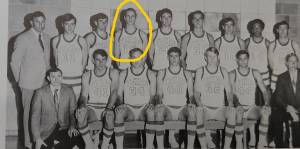
Anyway, I was in Austin for his last two years. What sweet memories I have of attending games at Gregory Gymnasium and seeing Leon Black’s team battle the Aggies, the Horned Frogs, the Red Raiders and so forth. Groscurth was on the floor most of the time. Here is a summary of his career in orange and white. Playing forward, he led the team in rebounding (9.3 per game) as a sophomore and scored 12.4, 7.8 and 10.6 points per game in his three seasons; he had a .465 shooting average. Decent numbers, but he did not come close to making all-Southwest Conference. Groscurth jumped very well, but he could not create a shot to save his life. I was always proud of him, being an ex-Cougar and all.
He married a BA girl* named Mikie Rybiski. I remember seeing her in the stands at Gregory Gym. We had a Facebook chat a year ago, and Mikie informed me that he can no longer leap to the rafters as he did at BA and UT, having undergone hip replacement surgery.
* His brother John (BA, class of 1970 and also a basketball player) did as well. His GF/wife is Linda Topper, who graduated with me in 1971.
Randy Cavender was two years ahead of me at Bryan Adams. I only saw him in the hallways and in the boys locker room in 1968-69. Big, happy, smiling guy, football star, popular with the girls. He led BA to the district championship—we almost beat South Oak Cliff in the city title game—and received a scholarship to Baylor.
Cavender was a red-shirt sophomore when I was a wet-behind-the-ears freshman at UT. November 6, 1971 was apparently his big chance, as coach Bill Beall had 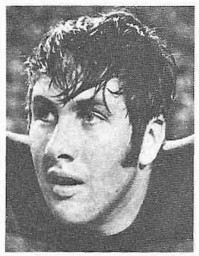 made him the starting quarterback. I was there at Memorial Stadium, hoping he would put on a show but he was in over his head as the Bears suffered a 24-0 defeat. In that season, Cavender completed just 9 of 37 passes with no touchdowns and 6 interceptions. He ran for two touchdowns, including one of 27 yards against the Ags at Kyle Field.
made him the starting quarterback. I was there at Memorial Stadium, hoping he would put on a show but he was in over his head as the Bears suffered a 24-0 defeat. In that season, Cavender completed just 9 of 37 passes with no touchdowns and 6 interceptions. He ran for two touchdowns, including one of 27 yards against the Ags at Kyle Field.
In 1972, he completed 4 of 6 passes and carried the ball 12 times for 34 yards, scoring twice. His senior year of 1973 consisted of 1 pass (uncompleted) and 5 carries for 4 yards. I am not making fun of Randy Cavender, because college football is a tough game. He was out on the field against other SWC teams, competing to the best of his ability. The green and gold went 1-9 in 1971, 5-6 in 1972 and 2-9 in 1973.
A genuine student-athlete, he graduated and wasted no time in earning a law degree from the same university. Cavender, who was employed by the FBI, died by his own hand on December 16, 1987. Baylor law students are eligible for the Randall P. Cavender Memorial Scholarship, funded by a group of his friends and admirers.
Neil Cohen is the only one of these eight I have actually met. A sophomore at BA when I was a senior, he used to come to Harry Stone Rec Center and play hoops. A wizard in handling a basketball, he was confident to the point of cockiness. Cohen’s future was not on the basketball court but on the soccer pitch, as he joined the Dallas Tornado soon after graduation. He also played with the Tulsa Roughnecks, San Jose Earthquakes, Houston Summit, Baltimore Blast, Denver Avalanche, St. Louis Steamers and Dallas Sidekicks.
I don’t know much or care much about soccer, but I have seen a photo of Cohen defending against Pele (the immortal Brazilian star) in a 1977 match at 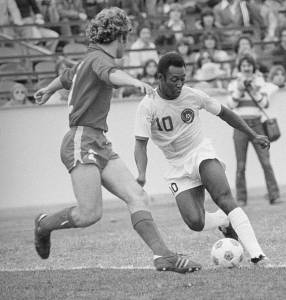 Downing Stadium between the Tornado and the New York Cosmos. OK, maybe it wasn’t the final game of the World Cup, but damn—Cohen got on the field against Pele! He coached a couple of Dallas-area youth teams and retired in 2006.
Downing Stadium between the Tornado and the New York Cosmos. OK, maybe it wasn’t the final game of the World Cup, but damn—Cohen got on the field against Pele! He coached a couple of Dallas-area youth teams and retired in 2006.
Lincoln Coleman, who graduated from my alma mater in 1987, made a lot of headlines. An all-state running back for the Cougars, he gained 1,521 yards his senior season. A load at 6′ 1″ and 250 pounds, Coleman signed with Notre Dame. Given minimal playing time, he transferred to UT and never got on the field. I wish I knew why. Not the most stable of individuals, he then traveled up I-35 to Baylor. Coleman carried the ball 111 times for the Bears in the 1989 season, gaining 368 yards, catching two passes and scoring thrice. His report card must have shown a lot of D’s and F’s (did he learn nothing from those three years at Bryan Adams?) because he soon dropped out of BU. He kicked around, played a bit of semi-pro ball and somehow drew the attention of the Dallas Cowboys. Coleman proved himself on the practice squad and got promoted. What a debut he had on Thanksgiving Day, 1993—57 yards on 10 carries against the Miami Dolphins on a sleet-covered field at Texas Stadium, capped by Leon Lett’s memorable boner. In the Cowboys’ defeat of the Buffalo Bills in Super Bowl 28, he rushed once and lost three yards. But let the record show, he earned a Super Bowl ring.
Trouble followed Coleman wherever he went. He developed drug and alcohol problems, and was overweight when 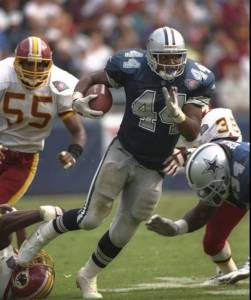 training camp opened. You think Barry Switzer was going to stand for that? Coleman was shown the door. He spent three years in the Arena Football League and did fairly well, a suspension in 1998 notwithstanding. Coleman coached at two high schools before things really fell apart. Thought to have suffered eight concussions during his football days, he has dementia and bipolar syndrome—a cruel combination. He has been homeless and attempted suicide twice, and is cared for by his mother in Dallas. They hoped for salvation with the NFL’s 2018 “concussion settlement” program but have yet to receive a penny. In my opinion, Coleman has a weak case. He played just 18 games in the NFL and was Emmitt Smith’s sub most of the time; his problems, real though they are, cannot be traced to his brief stint with the Cowboys.
training camp opened. You think Barry Switzer was going to stand for that? Coleman was shown the door. He spent three years in the Arena Football League and did fairly well, a suspension in 1998 notwithstanding. Coleman coached at two high schools before things really fell apart. Thought to have suffered eight concussions during his football days, he has dementia and bipolar syndrome—a cruel combination. He has been homeless and attempted suicide twice, and is cared for by his mother in Dallas. They hoped for salvation with the NFL’s 2018 “concussion settlement” program but have yet to receive a penny. In my opinion, Coleman has a weak case. He played just 18 games in the NFL and was Emmitt Smith’s sub most of the time; his problems, real though they are, cannot be traced to his brief stint with the Cowboys.
The last Cougar on our list is Kenyon Martin, a 1995 grad. Born in Saginaw, Michigan, he moved to Dallas at a young age with his mother and sister. Wikipedia tells me that he played baseball and football as well as basketball, but I am almost certain he never wore green and white in the first two sports; this 6′ 9″, 230-pound athlete was meant for the hardcourt game. His father, who he met just once, played basketball at New Mexico. Although not a blue-chip recruit, he signed with Cincinnati. Bob Huggins put him in the starting lineup halfway through his freshman season, and he made steady progress from there. As a senior in 2000, he averaged 18.9 points, 9.7 rebounds and 3.5 blocked shots per game for the Bearcats. Consensus all-American and player of the year, he suffered a serious leg injury in the Conference USA tournament and saw his team—ranked No. 1 for much of the season—bounced from the NCAAs early on.
Nevertheless, the New Jersey Nets trusted that K-Mart could regain his health and made him the top pick in the 2000 draft. He signed an $11.4 million contract and commenced a 15-year pro career with the Nets, Denver Nuggets, Los Angeles Clippers, New York Knicks and Milwaukee Bucks. The closest he came to grabbing the 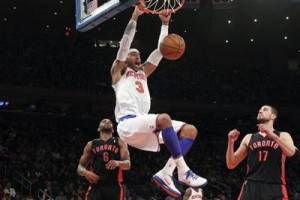 brass ring was in 2002 and 2003 when New Jersey reached the NBA finals, only to lose to the Los Angeles Lakers and San Antonio Spurs, respectively.
brass ring was in 2002 and 2003 when New Jersey reached the NBA finals, only to lose to the Los Angeles Lakers and San Antonio Spurs, respectively.
Kenyon Martin—you talk about a guy who attacked the rim! He was ferocious, and his game was all about intimidation. Heavily tatted, he had one on his chest that said, “Bad Ass Yellow Boy.” Martin traveled with a rather aggressive entourage, and confrontations before, during and after games were not unusual. He used to dunk on guys like Dikembe Mutombo, Karl Malone or Dirk Nowitzki and ask how they liked it. NBA refs knew him as a volatile player who committed more than his share of flagrant fouls. Martin has been retired for five years now, but he still epitomizes the NBA I have come to loathe.

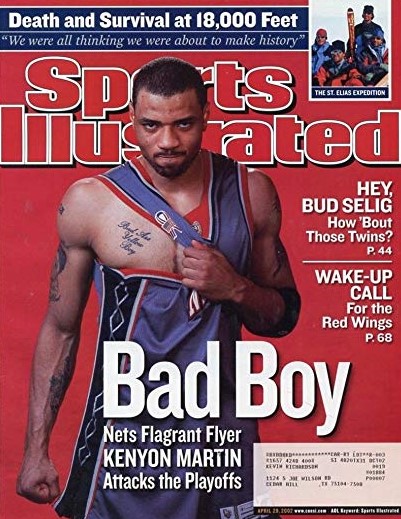
8 Comments
Great stories, I don’t know how you find all this info! My school only had 1 pro athlete as far as I know, a pitcher for the braves Tommy Boggs
I remember him and knew he was an Austin boy.
Thank you, Richard. While I remember just a few of the listing you included, i actually worked with Bob Huggins when I was an associate Commissioner of Conference USA. I put together the conference basketball schedule and showcasing Kenyon Martin was a big part of that.
Thanks for the article and your detailed research.
Rex, thanks so much for reading and offering a comment. I wonder what kind of stuff you saw. For example, did you see Martin’s gruesome leg injury? And was he a bad-ass even then, or did it start in the pros?
Richard they’re trying to find a name for the new sports center at Bryan Adams. Do you have any ideas?
M-m-m-me???
You missed 5-time karate and kickboxing world champion Ray McCallum. Ray attended Robert T Hill and Bryan Adams in the mid and late 70’s. He traveled the world fighting and winning titles in several countries and was on the cover of numerous magazines. He had fights televised many times including on NBC Sports winning the world super middleweight title. He is also recognized by several Hall of Fame organizations.
I did not know about McCallum, but this is impressive. I limited the story to 8 notable jocks….maybe I should have gone with 9. Thanks for your comment.
Add Comment